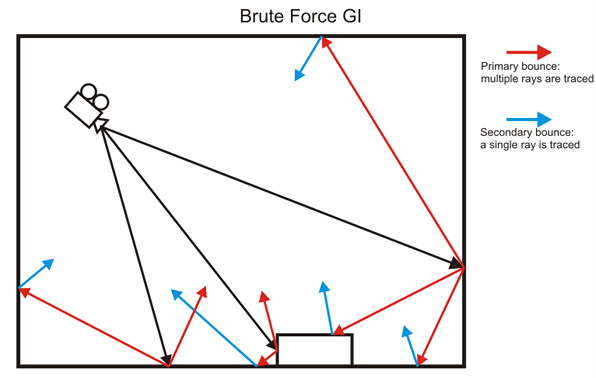Overview
The Brute Force method for computing global illumination recomputes the GI values for every single shaded point separately and independently from other points. This method is very accurate, especially if you have many small details in the scene.
Using Brute Force as both the primary and secondary engine is sometimes the best solution for exterior renderings. For other types of renderings, it can be faster to use a less computationally-intensive method (such as the Light cache) for approximating secondary GI bounces.
The diagram on the right shows the way rays are traced when using the Brute Force method. The Engine for Primary bounces is always set to Brute Force. The first rays (shown as black lines in the diagram) are traced from the camera into the scene in order to determine the points for which GI is going to be calculated. When a ray hits a surface the primary bounces (red) are traced; the number of these rays is determined automatically by V-Ray. When the Engine for Secondary bounces is set to Brute Force, the secondary bounce rays (blue) are traced. In this case a single ray is traced for each bounce, and the number of bounces can be specified in the Brute Force settings (Depth/GI Depth/Bounces).
Notes
- You can speed up the Brute Force calculations by distributing them among several machines with the help of Distributed Rendering (DR).
